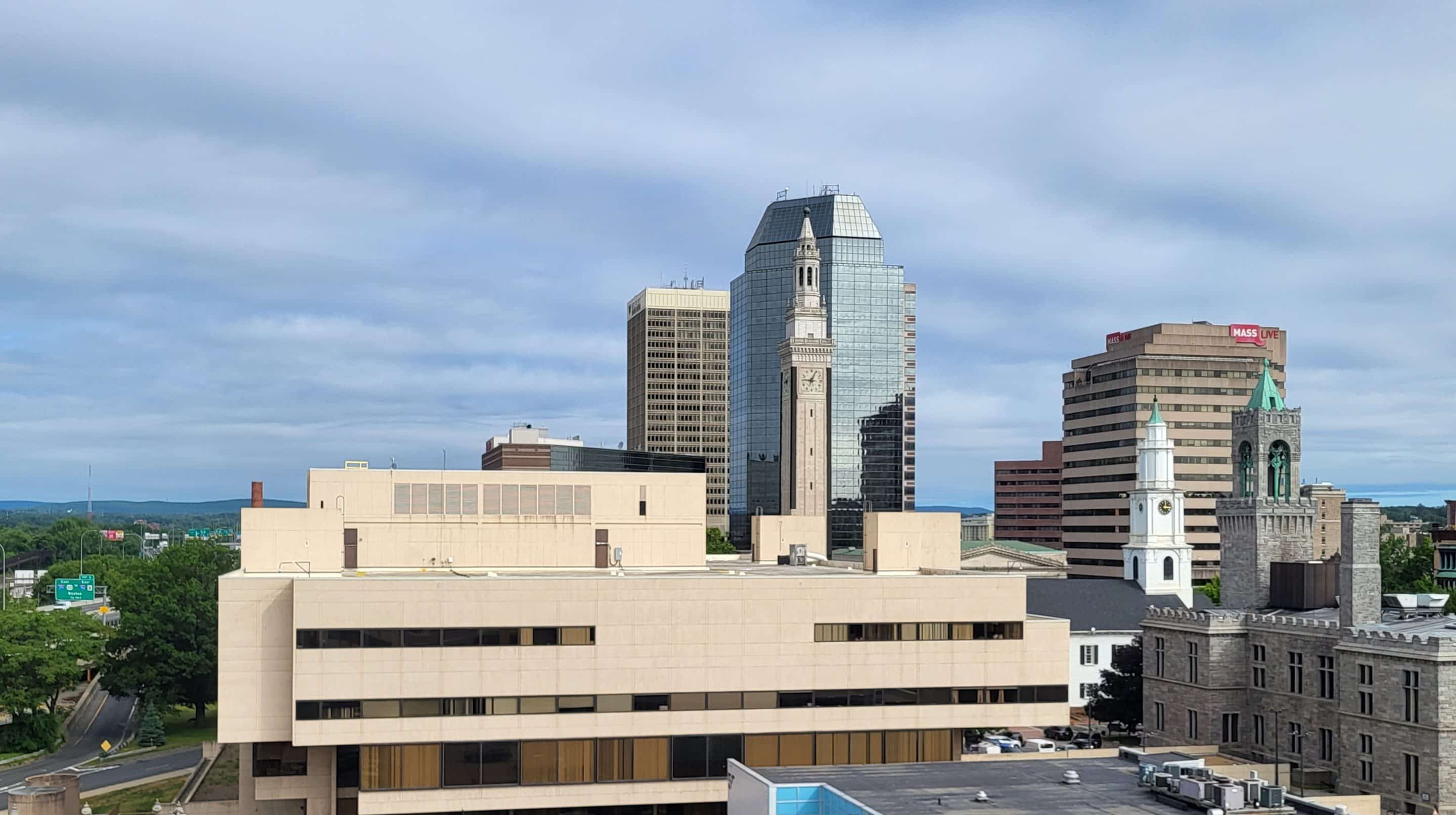SPRINGFIELD — In the name of mitigating climate change, a group of constituents are working with the City Council Sustainability and Environment Committee on an ordinance that would place greater protections on the city’s “micro forests.”
According to Juan Latorre, a City Council candidate, the goal of the “Urban Woodlands Ordinance” is not to necessarily restrict development in the city of Springfield, but rather provide crucial regulations that help preserve and protect the city’s mature wooded lots.
“Springfield doesn’t really have meaningful regulations in place to protect urban woodlands,” Latorre said in an interview. “There’s some things [the city] can do to make sure individual trees are protected, but there’s nothing in the way of protecting wooded lots.”
Latorre has been one of the researchers during the process of developing the ordinance, which is currently still in its draft phase. He, along with the Springfield Conservation and Nature Stewardship and Ward 8 City Councilor Zaida Govan, have spent numerous Sustainability and Environment committees working through the ordinance’s language with various constituents and city departments.
Work around the ordinance spawned after a group of Springfield residents were concerned about a solar installation project in the outer belt neighborhood, which included the elimination of a mature wooded area without any barriers.
As of press time, researchers of the ordinance say 80 parcels of urban woodlands and micro forests have been clear cut from the city over the last six years.
Aimee Loiselle, the president and co-founder of SCANS, said the proposed ordinance would be a compliment to the regulations the city already has around wetlands and “significant trees,” or individual trees on private property that are over 3 feet in diameter.
She shared that the current iteration of the ordinance would prohibit the removal of existing private shade trees from private parcels and require applicants obtain an Urban Woodlands Removal Permit before removing existing private shade trees.
Among other things, the ordinance would also create an Urban Woodlands Commission to enforce the ordinance’s regulations and require applicants who’ve received a permit to plant replacement trees.
The ordinance includes certain exemptions for owner-occupants who want to cut one to nine trees, or unhealthy trees.
“It’s an ordinance that will hopefully protect the air quality in Springfield,” said Govan, the chair of the Sustainability and Environment Committee. “It’s going to hopefully help homeowners and ratepayers not pay as much for electricity because of the cooling effects of the trees that we’re going to protect.”
As part of an organization that prioritizes climate change mitigation, Loiselle concurs with Govan’s sentiments. Through researching other cities that implemented a similar ordinance, Loiselle said SCANS and Latorre found that temperatures were five to 10 degrees cooler in areas where wooded areas were maintained.
She shared that urban woodlands also cooled not just immediate neighborhoods, but also areas within a 3 to 4 mile radius.
“We at SCANS are interested in climate change mitigation,” Loiselle said. “We’ve done the research. What all the contemporary science says is that the only thing that helps cities deal with heat carbon sequestration and increased runoff from the extreme storms and flooding is mature trees.”
There’s other benefits to such an ordinance, according to its creators. Loiselle said she found that property values increased across a couple cities that implemented an Urban Woodlands Ordinance because people were attracted to the idea of a municipality protecting its resources.
Latorre, meanwhile, said the current draft of the ordinance also has language that places any fines or payments from tree elimination into a revolving tree fund, instead of the city’s general operating budget. The money in this fund, according to Latorre, would be used to plant new trees, purchase new trees or hire arborist consultants.
Latorre said the idea came from conversations with Amherst.
“It’s a revolving fund to make sure that Springfield constantly has a source of revenue to continue its goals of expanding the tree canopy throughout the city, which has an innumerable number of positive environmental [and] sociological health impacts for the city,” Latorre said. “That’s just one of the ideas that came from our research.”
The ordinance is currently not ready to go in front of the council. Govan said there will be at least one more subcommittee meeting to talk with developers about how the ordinance will affect them. She shared that the subcommittee has made it its priority to talk to as many people as possible while formulating the language, especially since it will impact future generations to come.
The hope, according to Govan, is to not deter development, but welcome responsible development without the threat of Springfield becoming the asthma capital of the country again.
Therefore, the creators of the ordinance are taking a meticulous approach to crafting it.
“I am trying to make sure that we hear every voice that will be affected by this … every resident, every business owner, every developer in the area [and] department heads in the city,” Govan said. “I like to be inclusive.”



